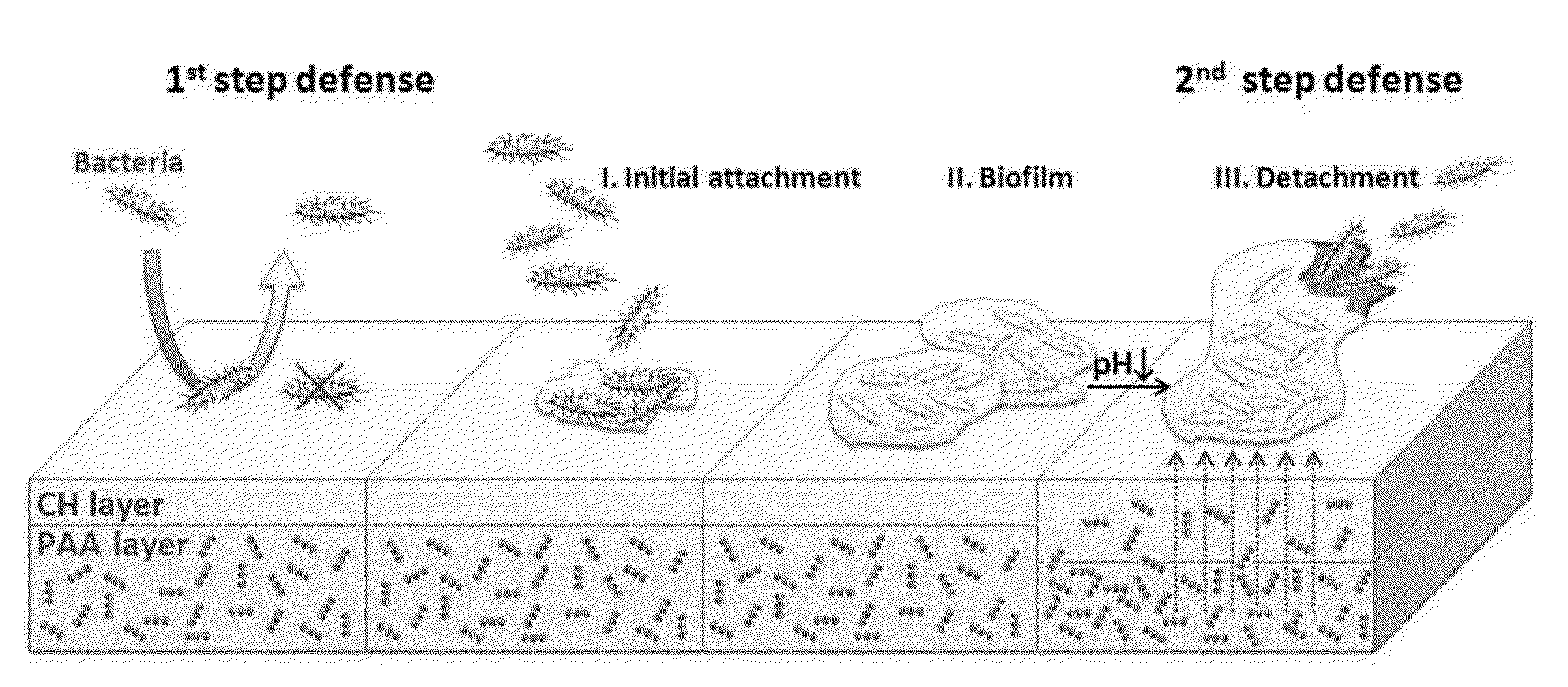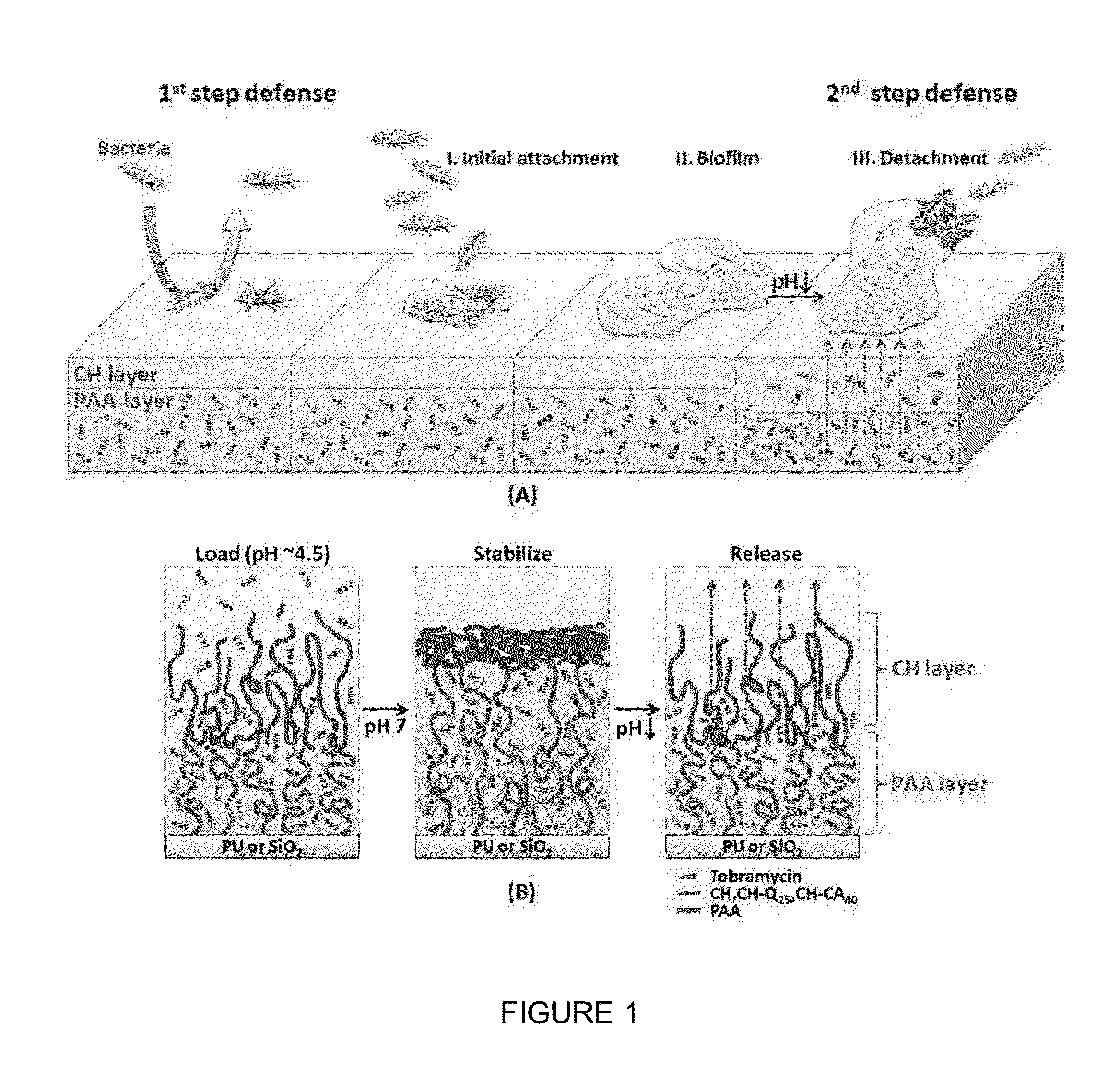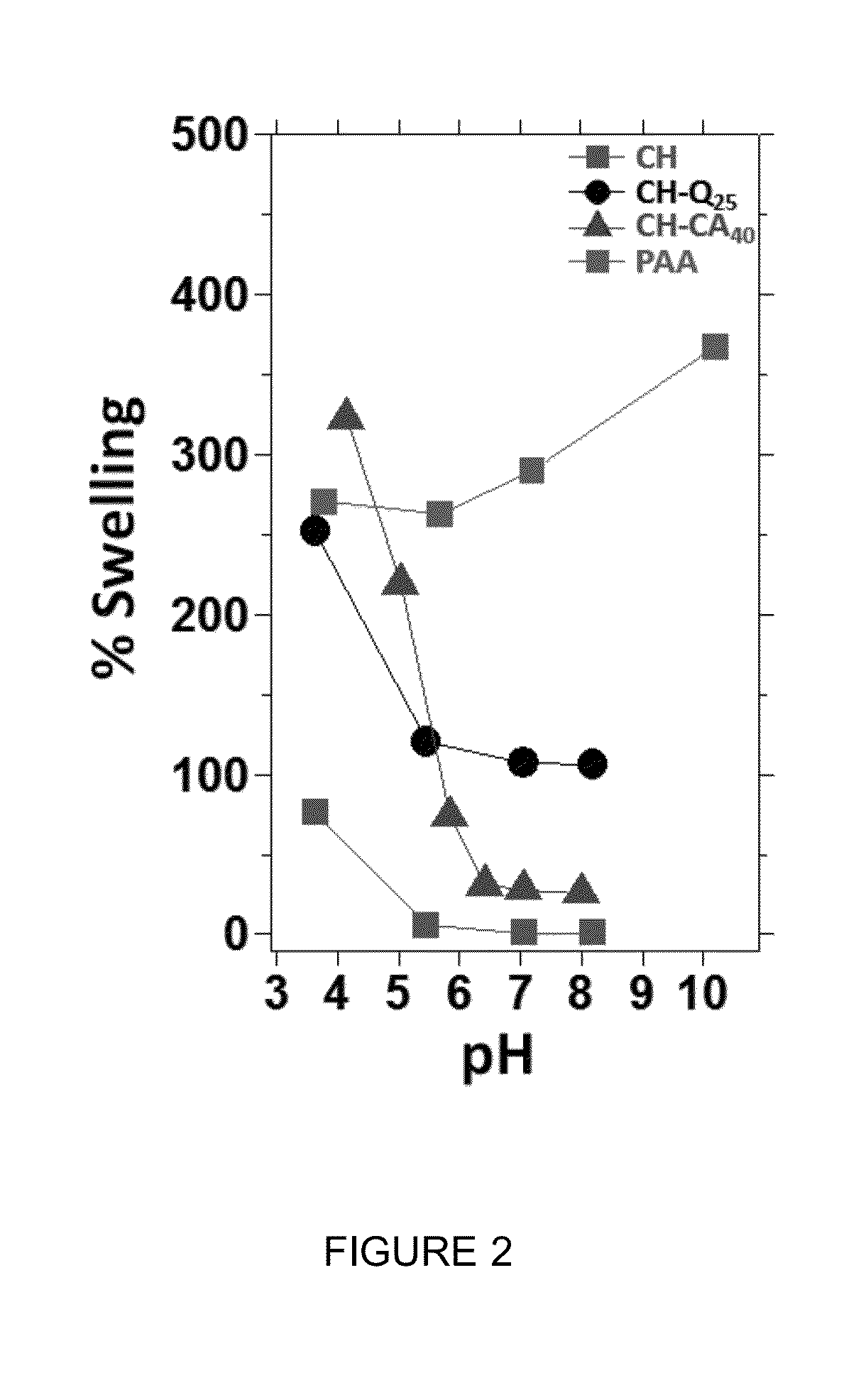Antimicrobial polymer layers
a polymer layer and antimicrobial technology, applied in the field of antimicrobial polymer layers, can solve the problems of poor aseptic technique, poor approach, and the inability to prevent infections, and achieve the effects of reducing the development of antibiotic resistance, simple approach, and efficient approach
- Summary
- Abstract
- Description
- Claims
- Application Information
AI Technical Summary
Benefits of technology
Problems solved by technology
Method used
Image
Examples
example 1
A Two Stage Mechanism for Preventing Bacterial Infection Using a Nano-Engineered Grafted Polymer Bilayer
[0079]A novel two-stage surface coating system was designed to prevent the initial adhesion of bacteria onto biomaterial and other surfaces, as well as to release microbicidal agents sequestered within the surface coating to eradicate infection should the later stage formation of biofilm occur. The bilayer system contains complementary outer and inner polymer brush layers that interfere with the ability of bacteria to adhere and, if necessary, release antibiotics triggered locally by the infection itself, respectively. The inner polymer is anionic (negatively charged) and grafted by one end to a biomaterial such as a polymeric catheter or metal implant. Many antibiotics (e.g., tobramycin) and antimicrobial agents are either cationic or contain amine groups; therefore these small molecules are electrostatically attracted to the inner brush. These agents remain sequestered at physio...
example 2
Nanoengineered Coatings for Preventing Catheter Related Bloodstream Infections
[0093]Nanoengineered grafted polymer brushes can prevent / inhibit catheter related bloodstream infections (CRBSI) via a novel two-step defense mechanism. Specifically, surfaces are tested for their ability to resist the initial stage of infection, namely preventing bacteria from forming molecularly specific bonds with the surface. Secondly if bacterial colonization and biofilm formation does occur, the nanoengineered brushes can locally release antimicrobial agents near the infection. Two systems are investigated. A brush of chitosan or modified chitosans containing quaternary or carboxylic acid groups are directly grafted to planar and tubular polyurethane via a short silane linker. Our research shows that these films grafted to model hard surfaces (e.g., glass or silicon) exhibit unique pH dependent swelling properties that inhibit bacteria attachment and retard biofilm formation. These model studies can ...
example 3
Controlled and Localized Release of Tobramysin from a Stimuli-Responsive Grafted Bilayer Challenged with S. Aureous
[0150]In the present study, a novel bilayer brush is introduced having a grafted anionic polymer that serves as a depot for antibiotics and an outer cationic polymer that exhibits orthogonal swelling behavior.
[0151]We grafted a polymer bilayer, comprised of an inner PAA monolayer cross-linked with an outer chitosan (CH) or quaternary modified chitosan (CH-Q) brush to planar and tubular oxide and polymer surfaces, respectively, and characterize bilayer swelling and collapse, the loading and release of antibiotics, and antibacterial and biocompatibility properties. FIG. 14B shows the bilayer construction with the end-grafted PAA brush (red) cross-linked to the outer CH (blue), respectively. Chitosan is a natural polymer that inhibits blood coagulation and inflammatory response upon blood contact (i.e., biocompatible) and resists the attachment of bacteria. Chitosan is in...
PUM
| Property | Measurement | Unit |
|---|---|---|
| Adhesion strength | aaaaa | aaaaa |
| Antimicrobial properties | aaaaa | aaaaa |
Abstract
Description
Claims
Application Information
 Login to View More
Login to View More - R&D
- Intellectual Property
- Life Sciences
- Materials
- Tech Scout
- Unparalleled Data Quality
- Higher Quality Content
- 60% Fewer Hallucinations
Browse by: Latest US Patents, China's latest patents, Technical Efficacy Thesaurus, Application Domain, Technology Topic, Popular Technical Reports.
© 2025 PatSnap. All rights reserved.Legal|Privacy policy|Modern Slavery Act Transparency Statement|Sitemap|About US| Contact US: help@patsnap.com



